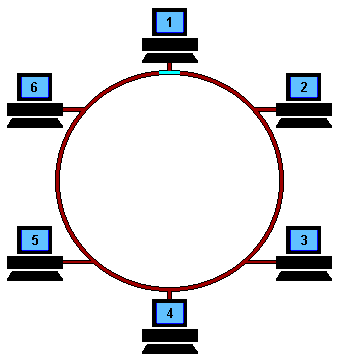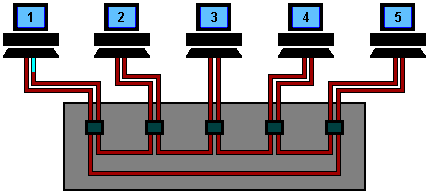Token Ring
At the start, a free Token is circulating on the ring, this is a data frame which to all intents and purposes is an empty vessel for transporting data. To use the network, a machine first has to capture the free Token and replace the data with its own message.
In the example above, machine 1 wants to send some data to machine 4, so it first has to capture the free Token. It then writes its data and the recipient’s address onto the Token (represented by the yellow flashing screen).
The packet of data is then sent to machine 2 who reads the address, realizes it is not its own, so passes it on to machine 3. Machine 3 does the same and passes the Token on to machine 4.
This time it is the correct address and so number 4 reads the message (represented by the yellow flashing screen). It cannot, however, release a free Token on to the ring, it must first send the message back to number 1 with an acknowledgement to say that it has received the data (represented by the purple flashing screen).
The receipt is then sent to machine 5 who checks the address, realizes that it is not its own and so forwards it on to the next machine in the ring, number 6.
Machine 6 does the same and forwards the data to number 1, who sent the original message.

Token Bus
A Token Ring hub simply changes the topology from a physical ring to a star wired ring. The Token still circulates around the network and is still controlled in the same manner, however, using a hub or a switch greatly improves reliability because the hub can automatically bypass any ports that are disconnected or have a cabling fault.










